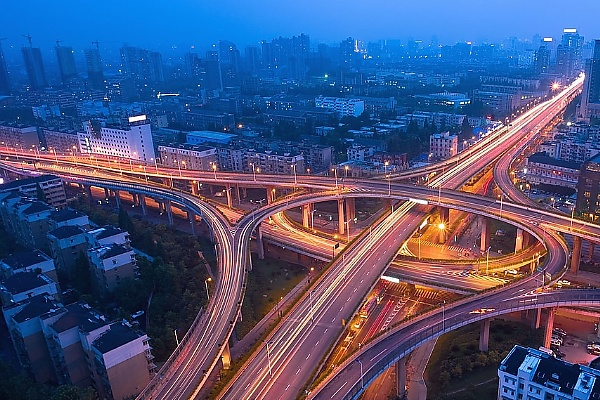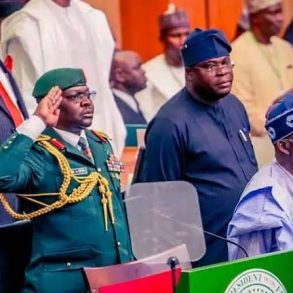The idea of a Lagos-Abuja superhighway, doing the trip in between four and six hours, cannot but excite travellers. The 717.7 kilometre journey now takes no less than 12 hours.
The very idea, from the Works and Housing Minister, Senator David Umahi, former governor of Ebonyi State, is an affirmation of President Bola Tinubu’s continuity of the acute infrastructure focus of his predecessor, President Muhammadu Buhari. Umahi’s sizzling talk is matched by his glittering infrastructure record in Ebonyi State.
It is also a grand vision of what an infrastructure-powered Nigerian economy would be in a few years, if the Tinubu government walks the minister’s brilliant and visionary talk. Infrastructure, after all, is not only the spur, but also the backbone of the economy.
How would Lagos to Abuja (and vice-versa), even in six hours, feel? For starters, halving the 12-hour travel time. If it’s four hours, that is two-thirds reduction of the present travel time. That’s almost magical!
Then, look at value, both private and business. A traveller after six hours is definitely fresher than someone on the road for 12 hours. Then, cargo: less time on the road delivering bulk is clear reduction in costs. That, other things being equal, should reduce inflation.
Then, human wellness: the shorter a driver spends en route to his destination, the higher his ability to stay alert; and the rarer, needless road crashes.
Besides, the choice of infrastructure ministers: that Umahi is succeeding Babatunde Fashola, who like Umahi also distinguished himself in infrastructure, both as thinker-governor of Lagos and as Works and Housing minister, just shows the federal emphasis on infrastructure is not about to shift. That’s good and welcome news.
But away from individuals and ministries: Umahi’s proposed superhighway opens a riveting prospect of mutual cooperation and healthy competition in core project deliveries, by the cluster of infrastructure ministries: Transport, Works and Housing, Aviation and Marine economy.
A Lagos-Abuja superhighway speaks to a Lagos-Abuja super speed train, perhaps in no more than four hours too. A part-answer to that is already in the Lagos-Ibadan-Kano standard gauge rail. The standard gauge is designed for faster trains.
The Abuja-Kaduna rail is a section of the Lagos-Kano rail — indeed, its first completed segment, with former President Goodluck Jonathan earning the credit, for his government completed the project in December 2014, though President Buhari inaugurated its commercial shuttle service in July 2016.
So, whatever challenged Umahi to work on the Lagos-Abuja superhighway should also challenge Mu’azu Jaji Gambo, the transportation minister, to work on the Lagos-Abuja rail.
The 312-Km Lagos-Ibadan section is already in service. Incidentally, a Lagos-Abuja high-speed train (615 km) is already embedded in the plan — and the Lagos-Ibadan section has already taken more than half of that.
So, the new transportation minister (his job pared down to just rail and auto) has his job well cut out for him. If he cannot surpass the passion of Rotimi Amaechi, the Buhari-era rail czar, he has no business not matching it. The health and future of the Nigerian economy may well depend on his drive.
Just imagine the value the delivery of cargo by rail, its likely cheaper cost, aside from longer lives of Nigerian highways!
But the utmost driver of core infrastructure is funding. President Buhari did most of it by tapping into the debt market — with its sweet-sour — including Sukuk bonds, and leveraging recovered stolen funds.
President Tinubu would have to look for more sustainable funding: a bigger tax haul, right pricing to generate revenue from already existing rail shuttles — human and cargo; highway maintenance tolling, and corporates’ road building from tax rebates (a funding strategy embedded under Fashola which is still in practice) — and maybe a smaller size of the debt market too. Mass rail, if well managed, can always pay its way, with Nigeria’s ready and booming market.
Still, thinking of cluster funding, Marine and Blue economy could prove a game-changer to fund infrastructure, if somehow it embraces smart revenue-harvesting practices. Its operation is basically revenue-spinning. A part of its earning could be devoted to infrastructure funding, after upgrading ports’ infrastructure.
Umahi’s Lagos-Abuja superhighway dream is more than just roads. It’s a metaphor for infrastructure as a spur of the economy and its sustainable funding. It’s the right focus and direction to go. All that is required is fresh — and critical — thinking.





